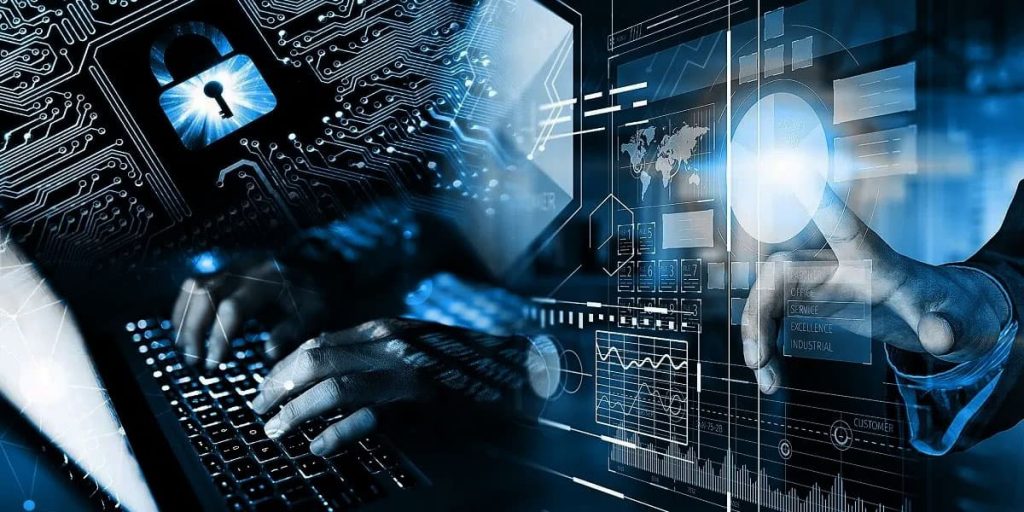Cybersecurity is something that we cannot touch or directly see. So why has AI in cybersecurity gained so much traction? Is it because of its ability to deal with or even prevent cybercrime? Do we even need it there, or is it just another AI-Gimmick? First of all, let's touch on the reasons that we definitely will notice when the security is missing. How? Data leakage, system shutdowns, stolen personal data, finances, etc. The list can continue, as day by day, our world utilizes more and more smart devices, which can also be hacked (oh no, who would have guessed). This is exactly when traditional security measures struggle to keep pace with evolving threats.
Understanding the Role of AI and Machine Learning in Cybersecurity
Let's start with the simplest — AI is a program whose main goal is to substitute human labor. You have probably already used most modern AI tools, but still, let me name a few related to security: visual perception, speech recognition, and decision-making. Machine Learning (ML), a subset of AI, is all about specially designed patterns (algorithms) that allow AI to "learn" and get experience. Of course, it happens in a very dissimilar way from how we humans learn. Since we are talking about cybersecurity, we have come to a more dynamic and adaptive approach with these technologies. Plus, it works much faster than traditional approaches based on predetermined rules.
AI and ML systems work with huge amounts of data. If you and I had to go through all this data manually, it would take days to see what an AI can do in hours or even minutes. This allows the system to adapt to new threats. Automation covers "simple" processes that don't require a lot of thinking, but it proves to be incredibly efficient due to the amount of data that is processed in short periods.

AI Applications in Cybersecurity
The amount of applications is vast. So, I will name just 4 of the most important ones and give each of them a brief explanation:
- Threat detection. Machine learning in cybersecurity excels at identifying potential dangers. It does this through ongoing pattern analyses of network traffic, user behavior, and system logs. For example, AI-powered systems can detect subtle variations in malware code that might elude traditional antivirus software, allowing for more effective protection against zero-day attacks.
- Predictive analytics. In this case, it is all about making predictions. They are not always accurate, but if so, these models can help cover many gaps in security. Thus, we can take steps to prevent threats before they appear.
The simplest example is letting AI analyze previous breaches. With a certain probability, it would be able to build predictions based on past successful attacks about how the next one would look, giving a chance to close the gap before it's attacked.
- Anomaly detection. AI algorithms are particularly adept at detecting anomalies, which serve as indicators for possible breaches. Firstly, they analyze the normal behavior of our systems daily, creating behavioral patterns. The magic happens when an AI notices that our activity goes beyond those patterns. Hence, AI can quickly flag unusual activities, such as sudden spikes in data transfers or atypical login patterns, which may signal an ongoing attack.
- Automated response. On threat detection, AI systems can autonomously initiate response protocols. This might include isolating affected systems, revoking user access, or deploying patches to vulnerable software. The speed of automated responses is a real game changer and can shorten the duration of attacks, thus decreasing damage.

Challenges and Limitations of AI in Cybersecurity
Sadly, all these benefits and use cases don't mean that we are completely safe. As cyber threat detection with AI becomes more sophisticated, so do cybercriminals' tactics. Attackers are now using AI for advanced malware and phishing techniques. Yes, in fact, we are talking about a new arms race (yep, again), just not between two superpowers but between hackers and defenders and their AIs.
Lastly, the effectiveness of AI models heavily depends on the quality and quantity of training data. Biased or incomplete data can lead to flawed threat detection models, potentially creating blind spots in an organization's security.
Here, I also want to add my opinion that while artificial intelligence in cyber defense offers numerous advantages, human expertise remains essential. I believe that cybersecurity professionals play a critical role in interpreting AI-generated insights. No matter how sophisticated an AI is, the human mind is the key to effective cybersecurity, especially when we talk about complex scenarios where context and nuanced judgment are required.
